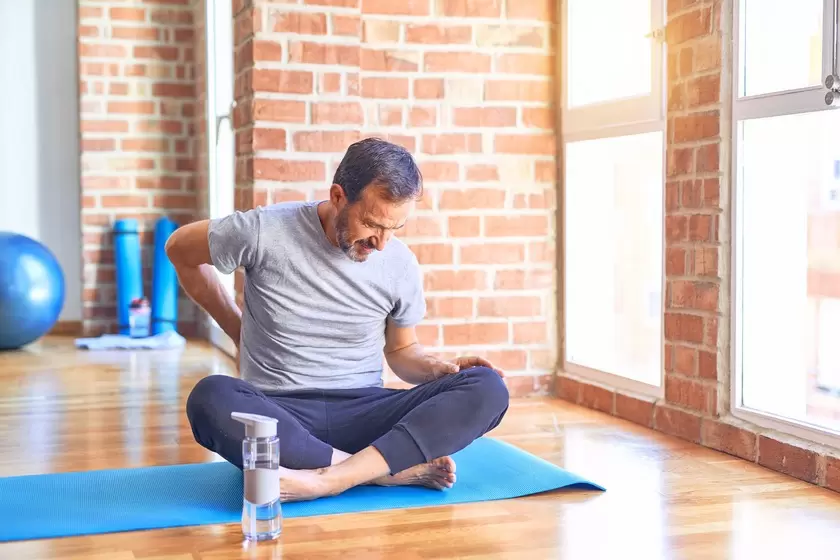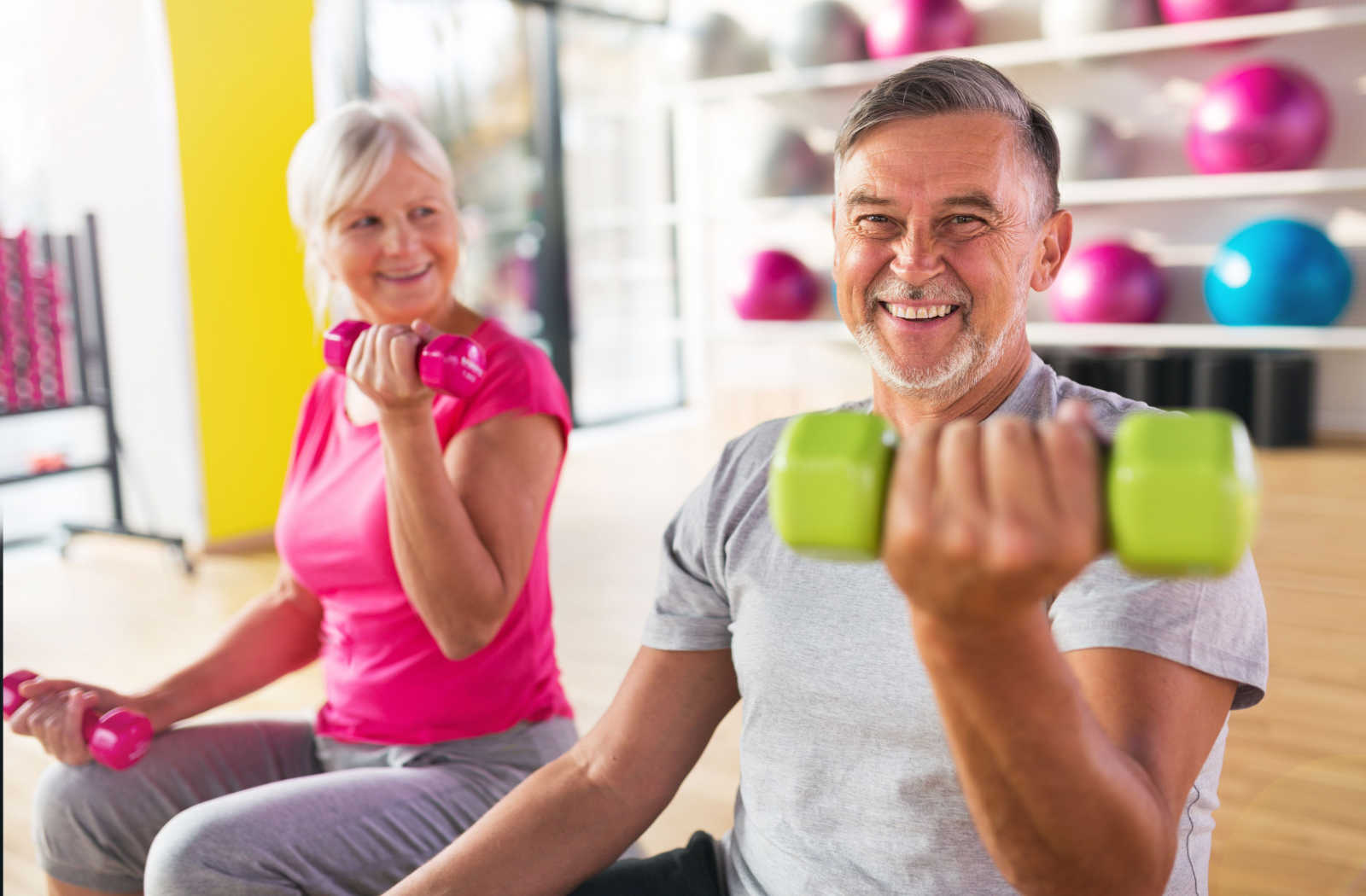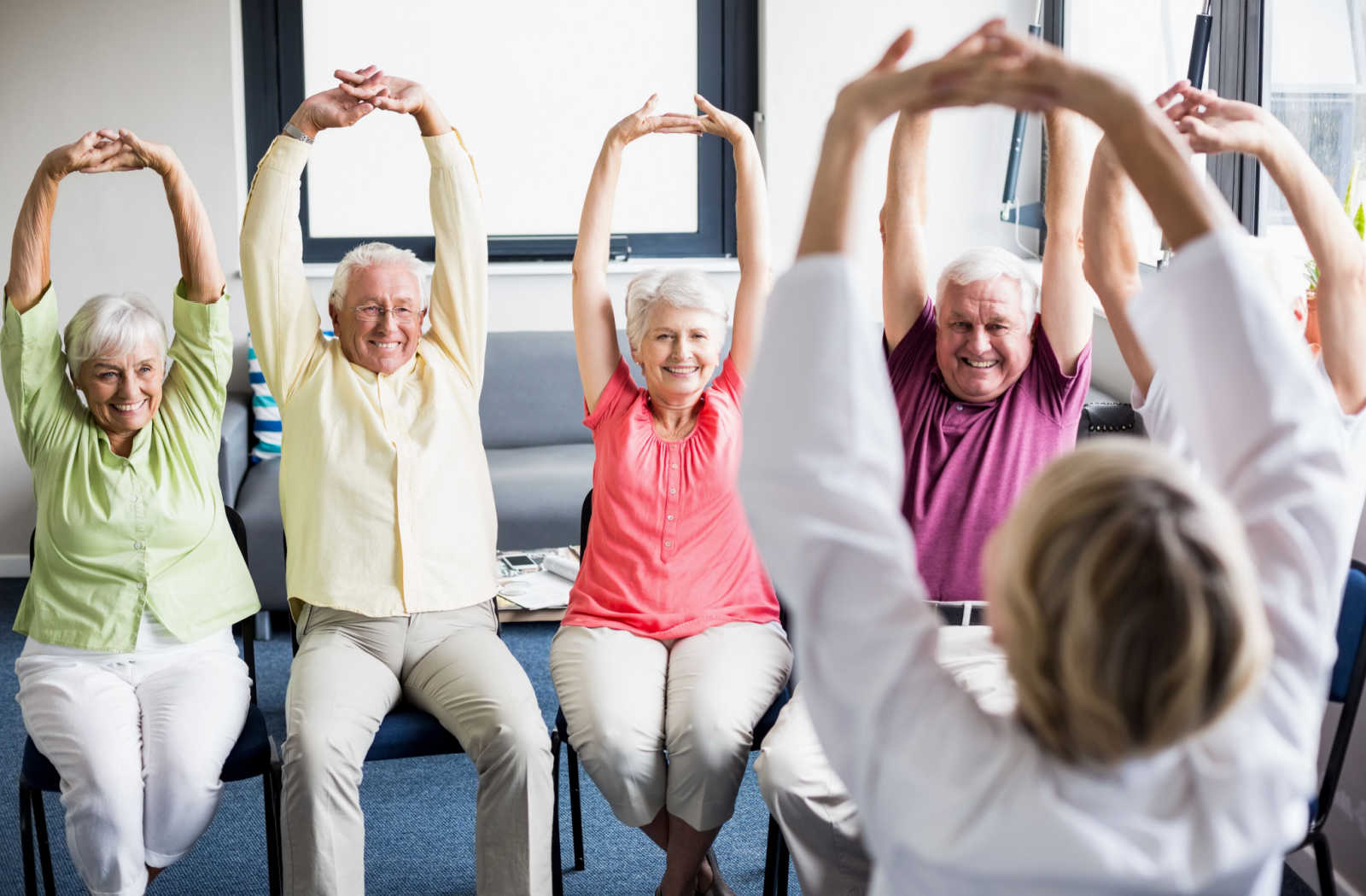Engaging in regular exercise is crucial for seniors, offering numerous health benefits, including improved strength, balance, and cardiovascular health. However, it’s essential to recognize when good intentions might lead to overexertion. In this guide, we’ll find out the delicate balance of exercise for seniors, identifying how much is beneficial and what might be considered too much. We’ll discuss signs of overexercise, recommended activity levels, and how to safely manage an exercise regimen to maximize health without risking injury or exhaustion.

Contents
How Much Exercise Is Too Much For Seniors?
There’s no one-size-fits-all answer to how much exercise is too much for seniors. It depends on various factors like their overall health, fitness level, and activity history. However, there are general guidelines and signs to watch out for:
Recommended Exercise Amounts:
The good news is most seniors likely won’t overdo it. The Centers for Disease Control and Prevention (CDC) recommends most adults over 65 get at least:
- 150 minutes of moderate-intensity aerobic exercise a week. This could be brisk walking, swimming, or dancing.
- OR 75 minutes of vigorous-intensity aerobic exercise a week. Think jogging, biking, or playing singles tennis.
- Strength training exercises that work for all major muscle groups at least 2 days a week.
Signs of Too Much Exercise
Seniors should be vigilant for signs that they might be pushing themselves too hard during workouts:

- Excessive Fatigue: Feeling unusually tired or drained after an activity can indicate that the intensity or duration of exercise is too much.
- Increased Soreness: While some muscle soreness is normal, persistent pain or soreness that lasts for several days indicates excessive strain.
- Mood Changes: Irritability, depression, or a lack of enthusiasm for exercise can be signs of overtraining.
- Decline in Physical Performance: A noticeable drop in exercise capability or endurance can be a sign of overexertion.
- Sleep Disturbances: Changes in sleep patterns, such as difficulty falling asleep or staying asleep, may be related to excessive exercise.
- Injury: An increase in injuries or joint pain can occur if the body does not have enough time to recover between exercise sessions.
What Are The Best Exercises For Seniors?
Here are some of the best exercises tailored for seniors:

1. Walking:
Walking is one of the simplest and most accessible forms of exercise. It improves cardiovascular health, strengthens muscles, and enhances mood without putting too much strain on the joints. Walking can be easily adjusted to fit an individual’s fitness level by altering the distance and pace.
2. Water Aerobics:
Exercises performed in water are excellent for seniors because the water provides buoyancy, which reduces stress on the joints and minimizes the risk of injury. Water aerobics improve cardiovascular health, increase muscle strength, and enhance flexibility.
3. Yoga:
Yoga helps improve flexibility, balance, and strength. It also has mental health benefits, reducing stress and promoting relaxation. Classes designed specifically for seniors can help address their needs and physical limitations, focusing on gentle poses and proper breathing techniques.
4. Tai Chi:
Tai Chi is a form of martial arts that involves slow, controlled movements and deep breathing. It is especially beneficial for improving balance and reducing the risk of falls, which are common concerns for older adults. Tai Chi also helps reduce stress and anxiety.
5. Strength Training:
Maintaining muscle strength is crucial for seniors to preserve their independence. Using light weights or resistance bands, strength training exercises can be performed to target all major muscle groups. It’s important to start with light weights and increase gradually as strength improves.
6. Chair Exercises:
For seniors with limited mobility, chair exercises are a great option. These can include seated marches, chair squats, and leg lifts, which can help improve cardiovascular health, increase muscle strength, and enhance flexibility without standing.
7. Pilates:
Pilates focuses on core strength, flexibility, and overall body awareness, which are all crucial for good health in older adults. Pilates exercises can be modified to suit those at different fitness levels and can be done using a mat or with equipment like reformers, which are particularly effective in a class setting.
8. Cycling:
Stationary cycling is a safe way for seniors to get cardiovascular exercise without the risk of falling. It helps build leg strength and can be easily adjusted for different fitness levels.
Frequently Asked Questions
What exercises should seniors avoid?
High-impact aerobics, deep squats, sit-ups, heavy running, or stair climbs are some exercises that seniors should ideally avoid. These can increase the risk of injuries and are generally more strenuous on the joints.
What are the key types of exercises recommended for seniors?
The four main types of exercises recommended for seniors include endurance exercises, flexibility exercises, balance exercises, and strength exercises. These will help improve heart health, flexibility, balance, and overall strength.
Is there such a thing as over-exercising for seniors?
Yes, over-exercising can be a concern for seniors as it may increase the risk of heart attack or stroke. It’s important to listen to the body and adjust the workout intensity accordingly.
How frequently should a 70-year-old exercise?
Seniors aged 65 and older should engage in at least 150 minutes of moderate-intensity activity such as brisk walking every week. Alternatively, 75 minutes of vigorous-intensity activity such as jogging or running per week is also recommended. Strength-building activities at least twice a week are beneficial.
What exercises are most effective for burning belly fat?
Effective exercises to burn belly fat include walking at a brisk pace, running, biking, rowing, swimming, and cycling. Participating in group fitness classes can also be a fun way to stay fit and active.

Hello, I’m Ravindra. Over the years, I’ve immersed myself deeply into the world of fitness and health, transforming both my body and mind. Writing has allowed me to share my journey, insights, and expertise with those just starting out and seasoned fitness enthusiasts alike. Beyond just routines and diets, I believe in inspiring others to adopt a holistic approach to well-being.
